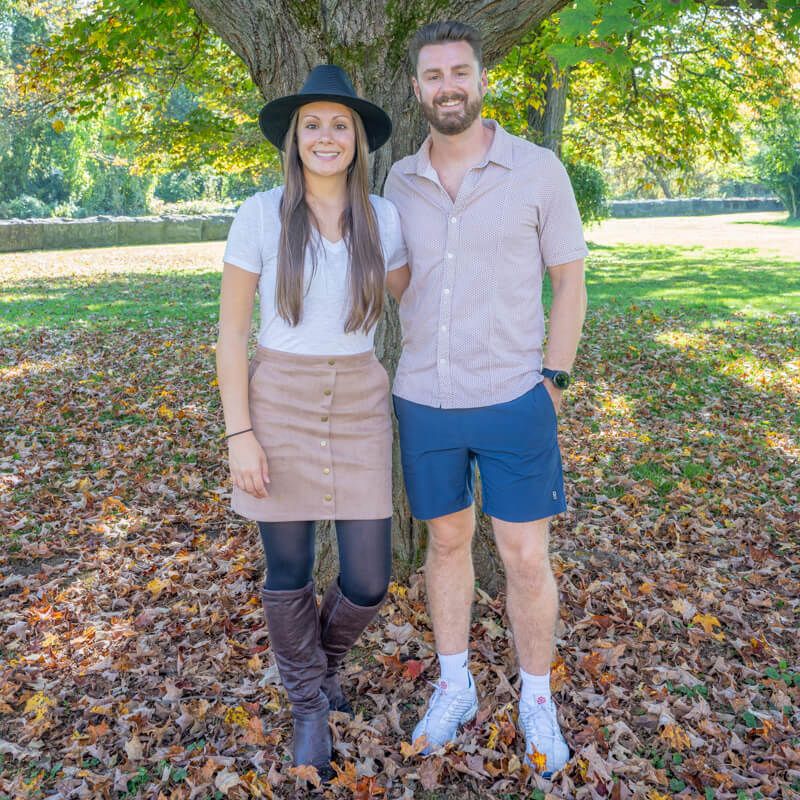The Jongmyo Shrine is one of the most unique things to see in Seoul because it features the spirit tablets of the deceased kings and queens of South Korea. It was built during the Joseon period and is still widely used today to perform royal ancestral rites multiple times a year.
In this guide, we’re going to show you everything you need to know about the Jongmyo Shrine and how to make the most of your visit.
Our Seoul Experience

We spent two weeks exploring Seoul in March 2023 and during this trip, we personally visited the Jongmyo Shrine on a crisp cool morning. This ancestral shine is an extremely important part of Korean history so it was at the top of our bucket list.
Unfortunately, you can’t access the interior of any buildings, but you can walk around the entire complex and stop at each point of interest in your own time. We didn’t take the guided tour, but we used the informational pamphlet and read various signs to learn about the complex. Read more about us.
What Is The Jongmyo Shrine?

The Jongmyo Shrine is one of the oldest Confucian royal shrines ever preserved. It’s home to over 80 spirit tablets from deceased kings and queens. Today, this is one of the most authentic shrines that represents the legitimacy of the royal family in South Korea.
First completed in September 1395, Jongmyo Shrine contains two royal memorial halls. The main hall is known as Jeongjeon while Yeongnyeongjeon was built a few years later in 1421 as the auxiliary hall.
During the Joseon Dynasty from 1392-1910, a traditional ritual known as Jongmyo Jaeryeak was held on the first month of a seasonal change as well as the twelfth month of the lunar year. This was a musical ceremony with instruments, dances and songs.
But throughout the Japanese colonization from 1910-1945, these traditional rituals were not performed. However, after the liberation of Korea in August 1954, the rituals have since been performed on the property. And the Jongmyo Shrine was officially included on the UNESCO World Heritage List in 1995.
Visitor Information
The Jongmyo Shrine is located on the eastern side of Seoul directly next to Changdeokkgung Palace. The best subway station for visiting is Jongno 3-ga Station (line 1 exit 11, line 3 exit 8 and line 5 exit 8).
- Address: 157 Jong-ro, Jongno-gu, Seoul, South Korea
- Location: Google Maps
It opens at 9:00am every day of the week except Tuesdays when it’s closed. And depending on the month of the year, the shrine closes at different times. Here are official hours of operation throughout the year:
- Feb to May + Sep to Oct: 9:00 – 18:00
- Jun to Aug: 9:00 – 18:30
- Nov to Jan: 9:00 – 17:30
Travel Tip: The last admission to the shrine is one hour before closing so be sure to give yourself enough time when visiting.
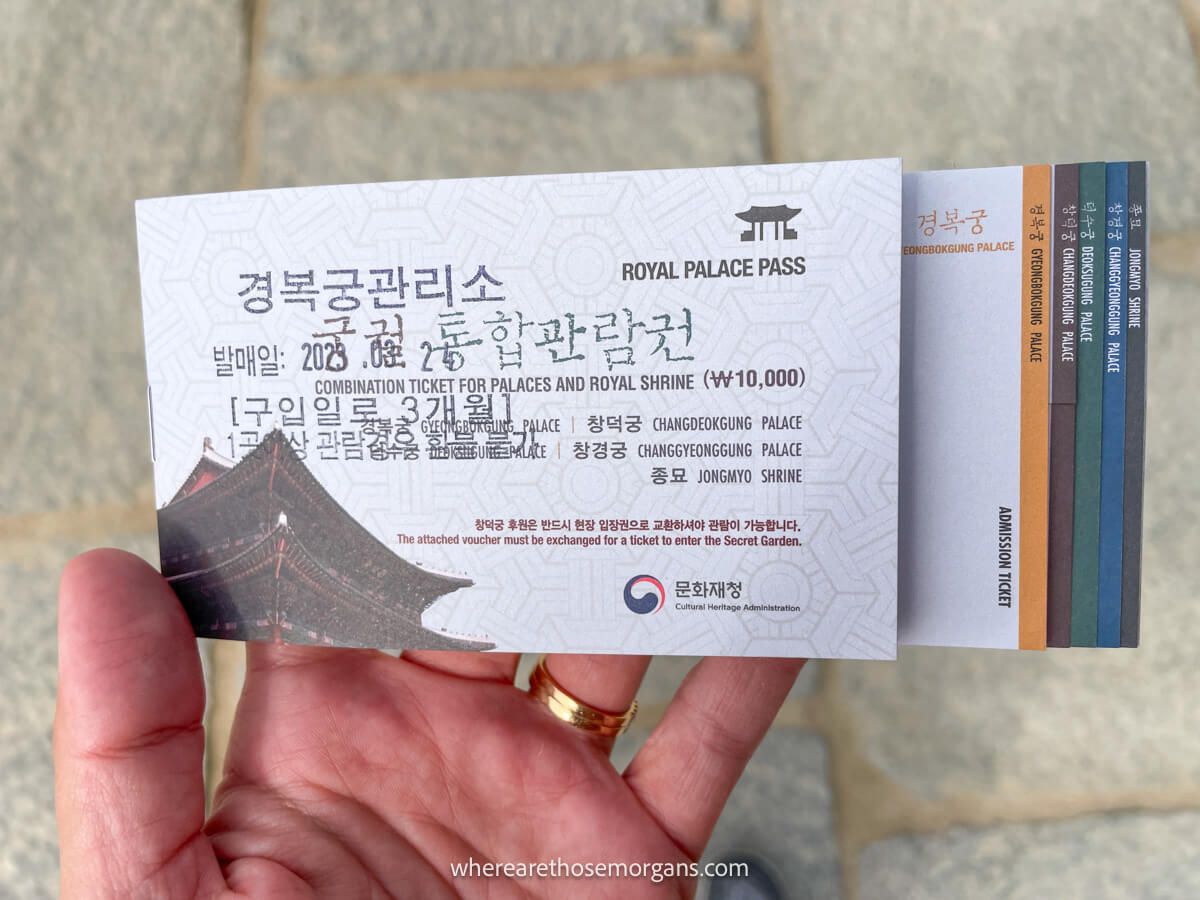
The Royal Palace Pass
We visited the Jongmyo Shrine with our Royal Palace Pass which we recommend if you plan to visit multiple palaces in Seoul. This pass costs 10,000 KRW (US $7.53) and it’s valid for three months from the date of purchase. But this pass can only be purchased onsite at the options below:
- Gyeongbokgung
- Changdeokgung
- Changgyeonggung
- Deoksugung
- Jongmyo Shrine
If you don’t have a pass, admission tickets for the Jongmyo Shrine cost:
- 1,000 KRW (US$ 0.75) for adults
- 500 KRW (US$ 0.38) for youths ages 7-18
Visitors over the age of 65 and children under 7 will receive free entry. Additionally, free admission is offered the last Wednesday of every month because it’s Culture Day.
A free guided tour is offered on weekdays in numerous languages. Here are the times:
- Korean: 9:20, 10:20, 11:20, 12:20, 13:20, 14:20, 15:20, 16:20, 16:40 (Mar to Sep)
- English: 10:00. 12:00, 14:00, 16:00
- Japanese: 9:40, 11:40, 13:40, 15:40
- Chinese: 11:00, 15:00
You can expect the guided tour of Jongmyo Shrine to last 60 minutes or you can easily visit the grounds yourself in less than an hour. Additional Korean tours are also offered on Saturdays and national holidays.
READ: What’s the best palace in Seoul?
What To See At The Jongmyo Shrine
There are a few key buildings you should find during your visit to fully understand the importance of this complex. Many of the building served important roles during rituals. Here’s what you shouldn’t miss:
1. Jeongjeon Hall
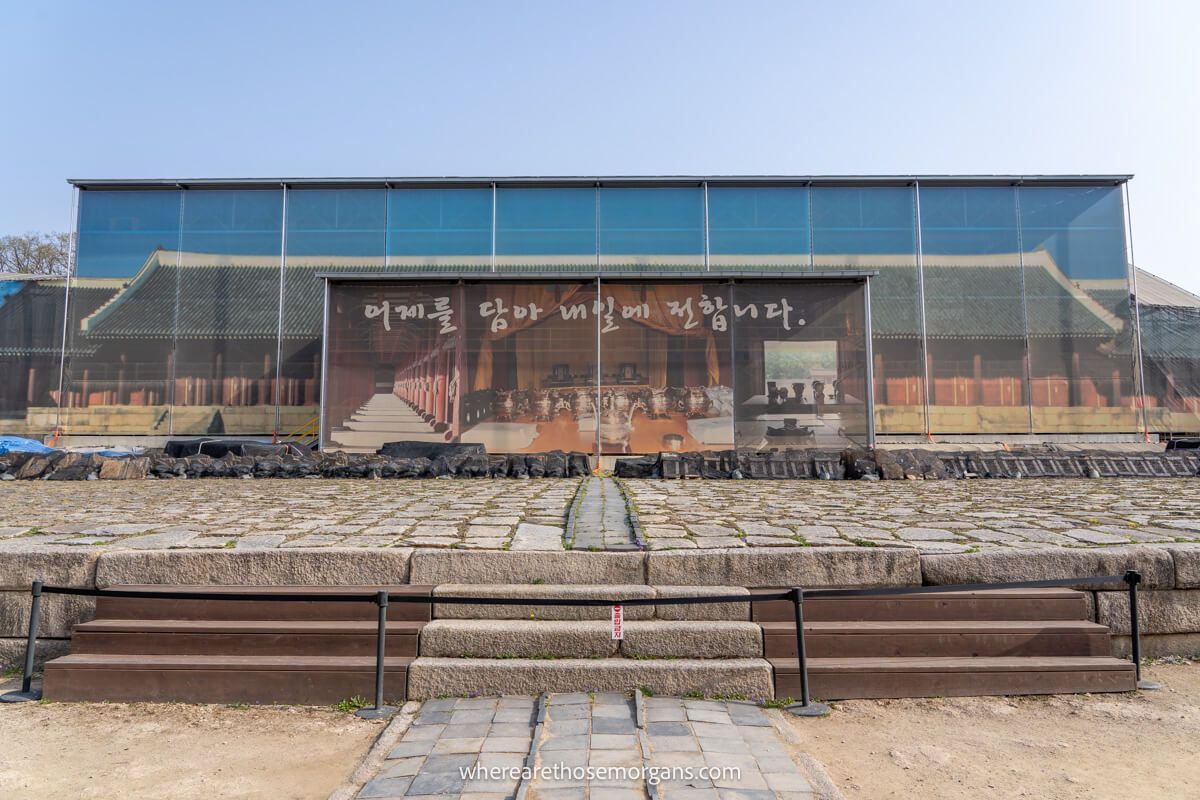
Jeongjeon is the main hall of the Jongmyo Shrine. After a king or queen passed away, a three year mourning period was observed at the royal palace, but then the deceased was brought to Jeongjeon to be enshrined.
It’s believed spirits enter through the south gate while the king and dancers enter through the west gate. This building was heavily under construction during our visit, but we were still able to view the exterior of Jeongjeon.
There is an an expansive stone yard with Gongsindang and Chilsadang houses nearby. Gongsindang is home to the spirit tablets for the praiseworthy subjects who served the king and Chilsadang contains the spirit tablets to the seven gods of heaven.
2. Yeongnyeongjeon Hall

The Yeongnyeongjeon Hall is known as the Hall of Eternal Peace. It was built as an annex to the main hall and enshrines four generations of King Taejo’s ancestors. Yeongnyeongjeon literally translates to “may the ancestors and descendants of the royal family live long in peace.” Today, there are 16 chambers housing 16 kings and 18 queens.
3. Akgongcheong

This building originally served as the court musician’s pavilion and dressing room. It was a place where musicians could rehearse songs that would be played during the rituals at Jongmyo Shrine. Both Jeongjeon and Yeongnyeongjeon have their own pavilion.
4. Jeonsacheong Area
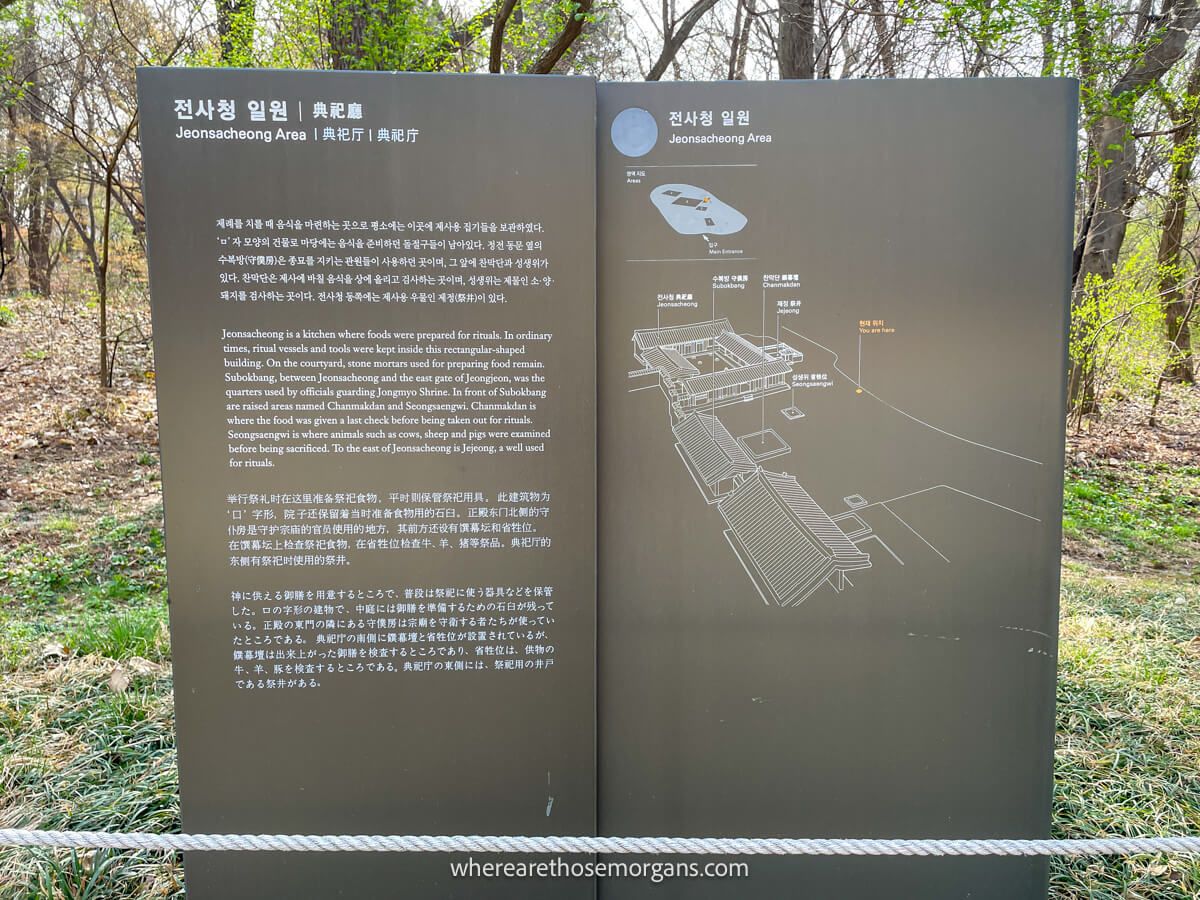
This is a kitchen where food was prepared for the royal rituals. Here you’ll find a raised stone table, known as a Chanmakdan, which was used to inspect food for festivities. After being inspected, food was then placed on the alters around the shrine.
5. Hyangdaecheong

This building was originally used as a storage room for ritual papers, offerings and incense. But today you’ll see a replica of the spirit preservation room. There is a model food offering and three spirit tablets. One interesting thing to note is the spirit tablets are placed in order of importance with the king’s tablet placed on the western side of the table.
6. Jaegung Area

The Jaegung Area consists of three main buildings including Eojaesil, Sejajaesil, and Eomokyokcheong. These were often used by the king and crown prince in order to purify their bodies for upcoming rituals. Here are the functions of the buildings inside the Jaegung Area:
- Eojaesil – The king used this building to remain pure prior to a ritual. Inside there is a portable throne next to a folding screen showcasing a beautiful peony.
- Sejajaesil – The crown price used this building to remain pure prior to a ritual. Inside there is a ten piece folding screen with numerous ritual pictures.
- Eomokyokcheong – This bath facility was used by both the king and crown prince before royal rituals.
Travel Tip: The peony is a flowering plant meant to symbolize wealth and power.
7. Jejeong Well
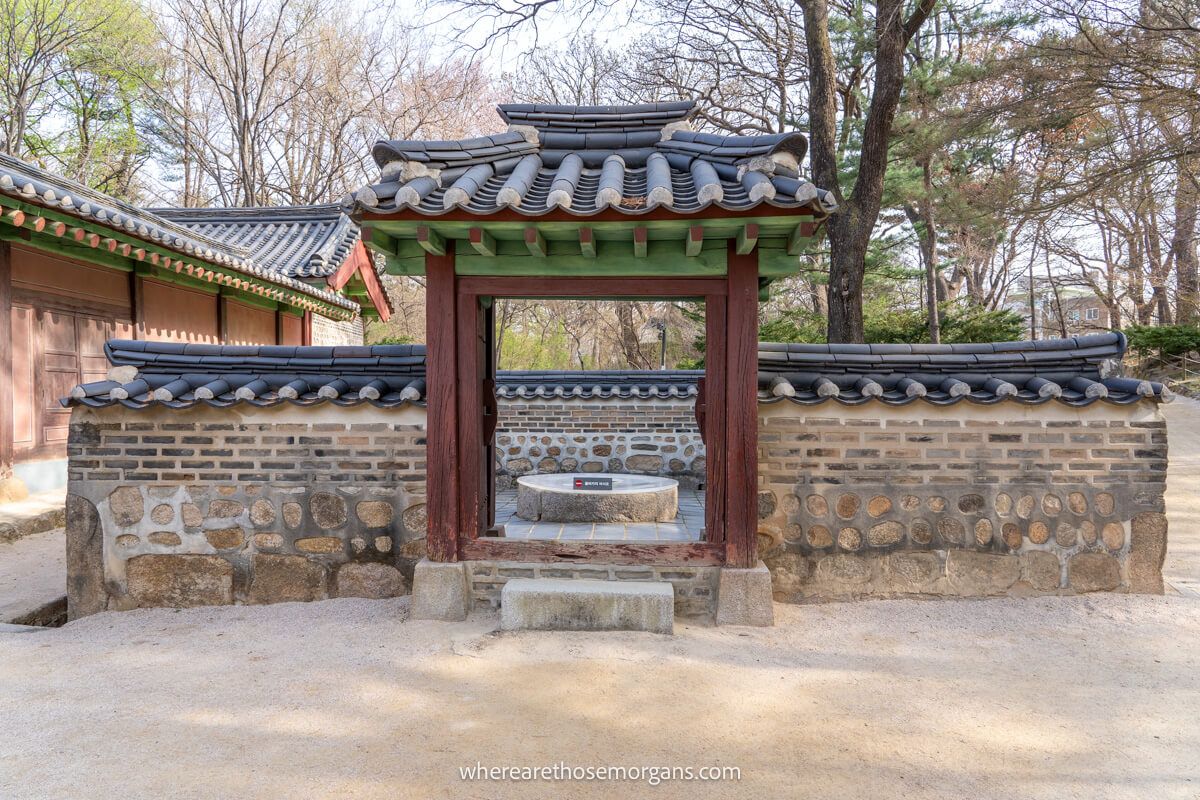
The Jejeong Well originally supplied the water during the entire ritual process. It was used to prepare food and animals as well as clean those who took part in the ceremonies.
The Morgan Conclusion
The Jongmyo Shrine is a unique complex that showcases over 500 years of Korean history. This is an important place where the Korean royal families performed rituals to honor their ancestors.
Is the Jongmyo Shrine worth it?
Yes, the Jongmyo Shrine is worth visiting because it’s one of oldest and best preserved Confucian royal shrines in all of Asia. This shrine offers visitors the chance to learn about the history of the Joseon Dynasty as well as the royal family of South Korea. If you’re a history buff, this shrine is a stop you should not miss in Seoul.
Unfortunately, our Seoul itinerary did not allow us to visit during a time when the guided tours were offered. While you can learn some information from the signs posted throughout the complex, we found them to be quite limiting. Next time, we’ll be sure to make it for the guided tour.
Our Jongmyo Shrine Photos
We enjoyed our visit to this shrine and took many photos. Here are a few of them so you know exactly what to expect for your visit:















Our Popular Seoul Guides
- 35 best things to do in Seoul
- How to find the best DMZ Tours
- Cool things to see at Imjingak Park
- Guide to visiting N Seoul Tower in Seoul
- How to visit Seoul Sky in Lotte World Tower
- Royal palaces you shouldn’t miss in Seoul
- How to visit Seodaemun Prison
- 20 best hotels for Seoul
Want more Seoul content? Head over to our South Korea Travel Guides to explore the very best of Seoul and beyond.
We hope this guide featuring the best things to do at the Jongmyo Shrine helps with planning your visit to Seoul!
Please let us know if you have any questions about visiting this shrine or South Korea in the comments below.
Happy Travels,
Mark and Kristen
Enjoy this Jongmyo Shrine guide? Pin it for your visit!


Note: This article contains affiliate links. When you make a purchase using one of these affiliate links, we may earn a small commission at no extra cost to you.
All Rights Reserved © Where Are Those Morgans, LLC. Republishing this article and/or any of its contents (text, photography, maps, graphics, etc.) in whole or in part is strictly prohibited.
Mark and Kristen Morgan are travel, hiking and photography experts. Over the last 6 years traveling full time, they have explored more than 40 countries and 30 US states.
Where Are Those Morgans has been featured in USA Today, Gestalten, Get Your Guide, CityPASS and Condé Nast Traveler along with various other publications. Read more about us.

